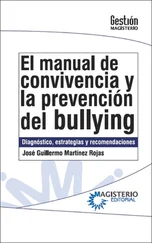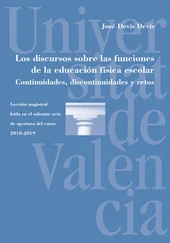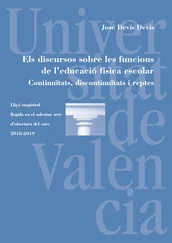Miyake, A., Friedman, N. P., Emerson, M. J., Witzki, A. H., Howerter, A. & Wager, T. D. (2000). The unity and diversity of executive functions and their contributions to complex frontal lobe tasks: a latent variable analysis. Cognitive Psychology, 41 , 49-100.
Monsell, S. (1996). Control of mental processes. In V. Bruce (Ed.), Unsolved mysteries of the mind: tutorial essays in cognition (pp. 93-148). Hove, UK: Lawrence Erlbaum Associates.
Montgomery, J. (2000). Verbal working memory in sentences comprehension in children with specifics language impairment. Journal of Speech, Language and Hearing Research, 43 , 293-308.
Moraine, P. (2012). Helping students take control of everyday executive functions . London: Jessica Kingsley Publishers.
Morris, N. & Jones, D. M. (1990). Memory updating in working memory: the role of the central executive. British Journal of Psychology, 81 , 111-121. doi:10.1111/j.2044-8295.1990. tb02349.x
Nelson, G., Westhues, A. & MacLeod, J. (2003). A meta-analysis of longitudinal research on preschool prevention programs for children. Prevention & Treatment, 6 , 1-35. doi: 10.1037/1522-3736.6.1.631a
Neuenschwander, R., Röthlisberger, M., Michel, E. & Roebers, C. M. (2009). Influence of socioeconomic status on executive functions among kindergarten children . Poster presented at the biennial meeting of the Society for Research in Child Development, Denver, CO.
Nigg, J. T. (2000). On inhibition/disinhibition in developmental psychopathology: views from cognitive and personality psychology and a working inhibition taxonomy. Psychological Bulletin, 126 (2), 220-246.
Nigg, J. T. (2001). Is ADHD an inhibitory disorder? Psychological Bulletin, 127 (5), 571-598.
Passolunghi, M. C., Vercelloni, B. & Schadee, H. (2006). The precursors of mathematics learning: working memory, phonological ability and numerical competence. Cognitive Development, 22 , 165-184. doi: 10.1016/j.cogdev.2006.09.001
Posner, M. I. (1978). Chronometric explorations of mind . Hillsdale, NJ: Erlbaum.
Posner, M. I. & Dehaene, S. (1994). Attentional networks. Trends in Neuroscience, 17 , 75-79.
Posner, M. I. & Petersen, S. E. (1990). The attention system of the human brain. Annual Review of Neuroscience, 13 , 25-42.
Posner, M. I. & Raichle, M. E. (1994). Images of mind . New York: Scientific American Library.
Posner, M. I. & Rothbart, M. K. (1991). Attentional mechanisms and conscious experience. In A. D. Milner & M. D. Rugg (Eds.), The neuropsychology of consciousness (pp. 91-112). London: Academic Press.
Reynolds, A. J., Temple, J. A., Ou, S. R., Robertson, D. L., Mersky, J. P. & Topitzes, J. W. (2007). Effects of a school-based, early childhood intervention on adult health and well-being. Archives of Pediatrics & Adolescent Medicine, 161 (8), 730-739.
Rothbart, M. K., Derryberry, D. & Posner, M. I. (1994). A psychobiological approach to the development of temperament. In J. E. Bates & T. D. Wachs (Eds.), Temperament: individual differences at the interface of biology and behavior (pp. 83-116). Washington DC: American Psychological Association.
Rojas-Barahona, C. A., Förster-Marín, C. E. & Gaete, J. (2017). Development of executive functions in pre-schooler children who has slight and strong symptoms of ADHD. Manuscrito en preparación.
Rojas-Barahona, C. A., Förster-Marín, C. E., Moreno-Ríos, S. & McClelland, M. M. (2015). Improvement of working memory in preschoolers and its impact on early literacy skills: a study in deprived communities of rural and urban areas. Early Education & Development, 26 (5-6), 871-892. doi: http://dx.doi.org/10.1080/10409289.2015.1036346
Rosselli, M., Matute, E., Ardila, A., Botero, V. E., Tangarife, G. A., Echeverría-Pulido, S. E., Arbelaez-Giraldo, C., Mejía-Quintero, M., Méndez-Losado, L. C., Villa-Hurtado, P. C. & Ocampo-Agudelo, P. (2004). Evaluación Neuropsicológica Infantil (ENI): una batería para la evaluación de niños entre 5 y 16 años de edad. Estudio normativo colombiano. Revista de Neurología, 38 , 720-731.
Rueda, M. R., Fan, J., McCandliss, B. D., Halparin, J. D., Gruber, D. B., Lercari, L. P. & Posner, M. I. (2004). Development of attentional networks in childhood. Neuropsychologia, 42 (8), 1029-1040.
Rueda, M. R., Rothbart, M. K., McCandliss, B. D., Saccomanno, L. & Posner, M. I. (2005). Training, maturation and genetic influences on the development of executive attention. Proceedings of the National Academy of Sciences of the USA, 102 , 14931-14936. doi: 10.1073/pnas.0506897102
Rueda, M. R., Checa, P. & Rothbart, M. K. (2010). Contributions of attentional control to socioemotional and academic development. Early Education & Development, 21 (5), 744-764. doi: 10.1080/10409289.2010.510055
Rueda, M. R., Checa, P. & Combita, L. M. (2012). Enhanced efficiency of the executive attention network after training in preschool children: immediate and after two months effects. Developmental Cognitive Neuroscience, 2 (1), 192-204. doi: 10.1016/j.dcn.2011.09.004
Rueda, M., Conejero, A. & Guerra, S. (2016). Educar la atención desde la neurociencia. Pensamiento Educativo. Revista de Investigación Educacional Latinoamericana, 53 (1), 1-16.
Sonuga-Barke, E. J. S., Thompson, M., Abikoff, H., Klein, R. & Brotman, L. M. (2006). Nonpharmacological interventions for preschoolers with ADHD: the case for specialized parent training. Infants Young Child, 19 (2), 142-153.
Soprano, A. M. (2003). Evaluación de las funciones ejecutivas en el niño. Revista de Neurología, 37 (1), 44-50.St. Clair-Thompson, H. L. & Gathercole, S. E. (2006). Executive functions and achievements in school: shifting, updating, inhibition and working memory. Quarterly Journal of Experimental Psychology, 59 (4), 745-759. doi: http://dx.doi.org/10.1080/17470210500162854
St. Clair-Thompson, H. L. & Holmes, J. (2008). Improving short-term and working memory: methods of memory training. In N. B. Johansen (Ed.), New research on short-term memory (pp. 125-154). New York: Nova Science.
St. Clair-Thompson, H., Stevens, R., Hunt, A. & Bolder, E. (2010). Improving children’s working memory and classroom performance. Educational Psychology, 30 (2), 203-219. doi: 10.1080/01443410903509259
Thierry, A. M., Glowinski, J., Goldman-Rakic, P. S. & Christen, Y. (1994). Motor and cognitive function of the prefrontal cortex . Berlin: Springer.
Thorell, L. B., Lindqvist, S., Bergman, S., Bohlin, G. & Klingberg, T. (2009). Training and transfer effects of executive functions in preschool children. Developmental Science, 12 , 106-113.
Tine, M. (2013). Working memory differences between children living in rural and urban poverty. Journal of Cognition and Development (preprint). doi: 10.1080/15248372.2013.797906
Tominey, S. L. & McClelland, M. M. (2013). Red light, purple light: findings from a randomized trial using circle time games to improve behavioral self-regulation in preschool. In M. M. McClelland & S. L. Tominey (Eds.), Self-regulation and early school success (pp. 135-165). London: Routledge.
Wanless, S. B., McClelland, M. M., Tominey, S. L. & Acock, A. C. (2011). The influence of demographic risk factors on children’s behavioral regulation in prekindergarten and kindergarten. Early Education & Development, 22 (3), 461-488. doi: 10.1080/10409289.2011.536132
Welsh, J. A., Nix, R. L., Blair, C., Bierman, K. L. & Nelson, K. E. (2010). The development of cognitive skills and gains in academic school readiness for children from low-income families. Journal of Educational Psychology, 102 (1), 43-53. doi: 10.1037/a0016738
Читать дальше












